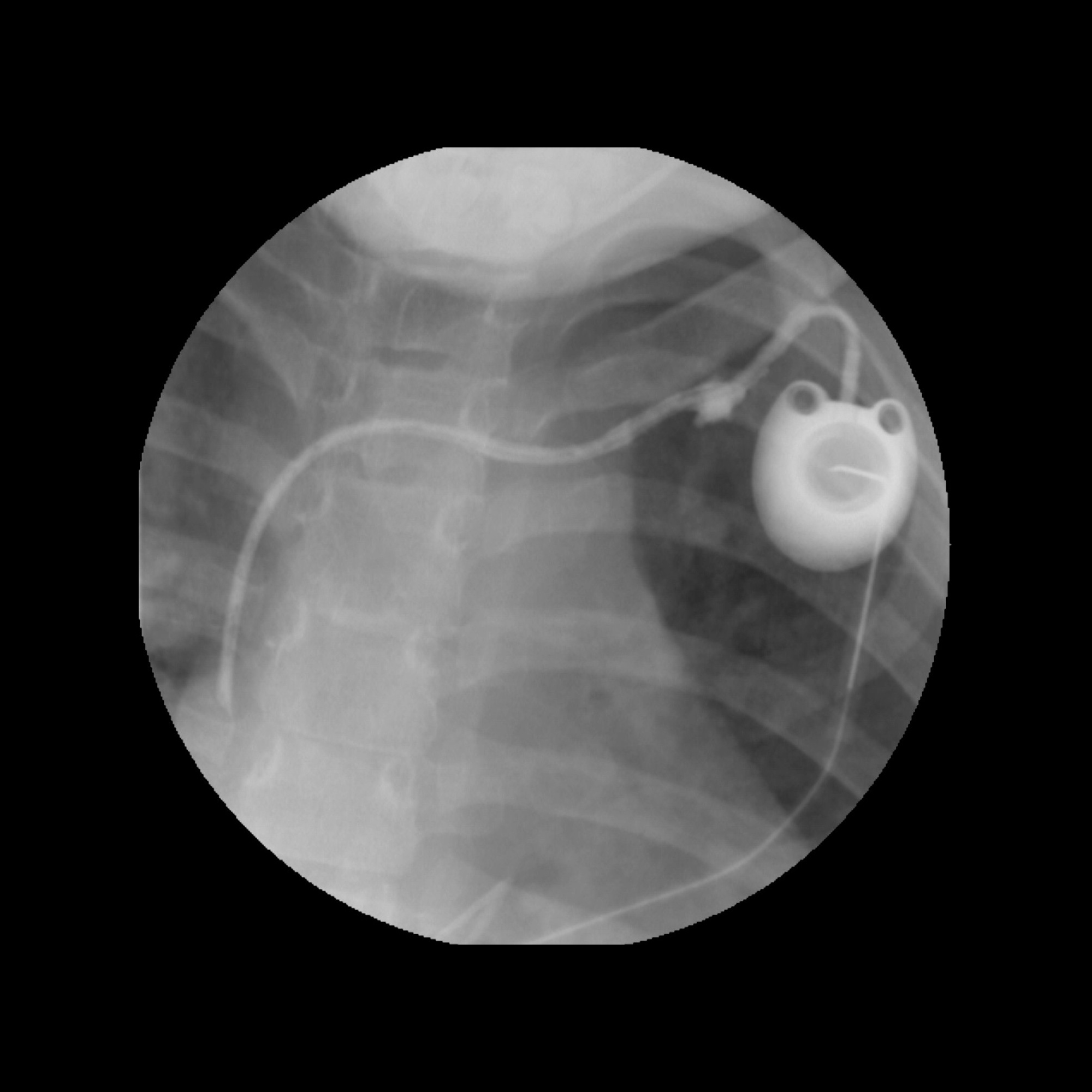Implantable port






Implantable ports, also known as chemoports, totally implantable central venous access ports or Port-A-Caths®, are a type of central venous catheter for patients requiring long-term venous access. They offer the ability to have long-term central venous access with some of the advantages over peripherally inserted central catheters (PICC).
History
Implantable ports insertions were frequently performed by surgeons. The first port implantation performed in an angiography unit using interventional radiology techniques in 1992 . Today, radiological venous port placement has become a regular interventional procedure.
Procedure
Indications
Similar to peripherally inserted central catheters (PICC), implantable ports are primarily inserted to provide long term central venous access. This is particularly useful for patients who require:
- long-term IV administration of medication (e.g. chemotherapy or antibiotics)
- peripheral access with standard IV cannulae is difficult or impossible
- to withdraw blood from the body in patients who require frequent blood tests
Contraindications
Absolute contraindication
- clinically in bacteremia or sepsis with and without neutropenia
Relative contraindication
- abnormal coagulation profile, prolonged bleeding time
- contrast allergy (can be performed without contrast administration)
Advantages
In comparison to peripherally inserted central catheters (PICC):
- implantable ports can last up to several years; PICC lines last for several weeks or months
- while PICC lines require daily flushing and dressing, implantable ports require less frequent since they are under the skin
- implantable ports are waterproof while a PICC cannot get wet
Patient preparation
- antibiotic prophylaxis is not recommended for routine use
Technique
There are wide variations in technique. The following steps are an example of a technique:
- preprocedure ultrasound can be performed to identify an appropriately-sized vein and ensure it is clot free
- the most common vein is the right IJV
- other veins include the left IJV, subclavian veins and inferior vena cava.
- vessel and port pocket should also not be ipsilateral with the breast cancer site or overlap with the proposed radiation therapy field
- vein is punctured under ultrasound guidance, a guide wire is inserted and the proximal end is secured
- the distal end of the guide wire is ideally placed in the inferior vena cava
- port pocket is created under local anesthesia
- the most common site for the pocket was at the pectoral region, approximately 2.5 cm from the clavicle
- the catheter is then inserted using a trocar subcutaneously from the pocket to the vein or vice versa
- peel-away sheath is inserted to facilitate the catheter insertion into the venous system
- catheter insertion is done during breath hold or inspiration and pinching of the peel-away sheath to minimize air embolism
- catheter tip is adjusted to the cavo-atrial junction
- distal end of the catheter is attached to the port
- port is anchored to the underlying muscle with sutures
- fluoroscopy is used to check for kinks and optimal positioning
- aspiration of blood done to check its function
- further contrast injection may be performed to reconfirm the tip position and function
- port must be flushed with heparinised saline
- pocket is then sutured in two layers and apply sterile dressings
Complications
- infection, e.g. catheter- or wound-related (most common)
- tip migration
- deep vein thrombosis
- periprocedural
- hemorrhage
- arrhythmia
- arterial puncture: less common with image-guidance
- malposition: less common with image-guidance
- beware of anatomical variants such as a left SVC
- line fracture/embolization
- allergic reaction
- pinch off syndrome if a subclavian approach is used
- pneumothorax
- hemothorax
Siehe auch:
- Portkatheter-assoziierte Thrombosen
- Portkatheter Komplikationen
- power injectable port system
- Fehllage Portkatheter
- Dislokation Portkatheter
- Miniport für Chemotherapie
- Leckage Portkatheter
- Portdiskonnektion
und weiter:

 Assoziationen und Differentialdiagnosen zu Portkatheter:
Assoziationen und Differentialdiagnosen zu Portkatheter:




